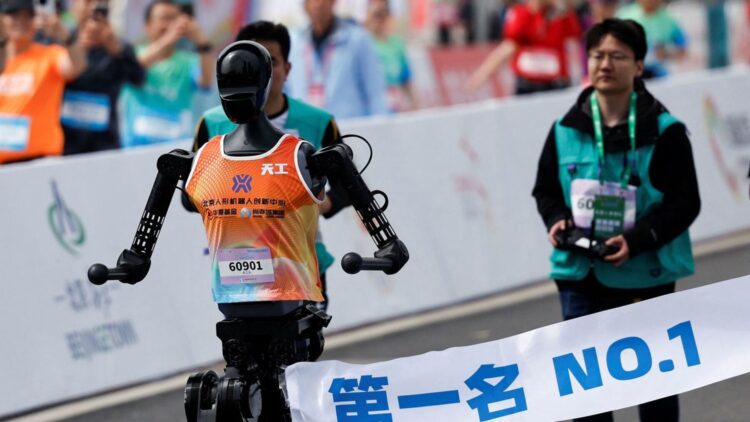The concept of a robot has been here for a few years already, and while the technology keeps advancing, it seems like the one type we are concerned about is those that look like humans or humanoids. After all, we are not really afraid of our robot vacuum cleaner, but we might be afraid if some of the popular robots from TV and movies came to life. But not everyone is scared of how these machines will integrate in our future, China, for example, decided to showcase the advances that they have made in this realm by putting up a half marathon for both humans and robots.
The robot contingent was a bit sparce compared to the humans that showed up, 12,000 human runners and 21 robot competitors is hardly an even split, but the excitement over the 13-mile course was palpable to those who went to cheer them on. While the humans tookselfies and jogged casually, the robots faced their own set of challenges, malfunctioning propellers, collapsing parts, and overheating circuits. They obviously did not win, and only six robots crossed the line in the end.
The Chinese human and robots race and what it represents for the future of the technology
While it would have sounded a lot more impressive for a robot to stun all competitors and take the win, that was not the point of the race. Some of the robot competitors laid down mid-race and others broke apart entirely. But it was not about making it to the finish line, it was about testing what these machines could do when pushed to their limits.
One standout from the race was Tiangong, the humanoid that ended up taking first place among the robots. Tiangong clocked in at 2 hours and 40 minutes, after three battery swaps and a full-on fall, quite impressive considering the circumstances. Before the race, Tiangong even showed off a bit of its personality. Its owners put on a demo during which it politely greeted onlookers with, “You say hello”, and when someone replied, it answered, “Nice to meet you too.”
The robots had to be customized for the race. Engineers screwed sneakers onto their feet, dressed them in track suits, and in some cases, even removed heads or fingers to reduce weight and avoid overheating. One CEO explained, “It’s not about winning, it’s about testing the batteries, which are the core technology here.”
Another team leader also stated that the whole experiment was never about winning, but about showing the progress made “That more than 20 robot companies participated shows that robot tech in China is pushing forward quickly.”
Even though the concept of a robot is not strange to us anymore, one of the racers was still stunned by seeing the spectacle in person. Aged 74, she gave a statement just before the race exclaiming “At 74, these new things can open my eyes.” And she was not the only one, the race drew a crowd that was excited to participate in this historic event.
Sadly, not everyone was as excited to finally see the comingling between robots and humans, as some people still find them a little creepy, especially when developers talk about future versions that will have silicone skin, hair, and even facial expressions. While the ultimate goal seems to be getting these humanoids to do everything from factory work and household repairs to taking care of the elderly, the fact that we want them to closely resemble us is still very unsettling to some. “For a lot of people, this might be freaky,” one observer admitted.
Another team leader explained the logic behind the realism “We want robots to feel more real, so people feel more comfortable around them.” While we cannot guarantee this will happen, it will be fun to see what they come up with next year if they decide to race again.

